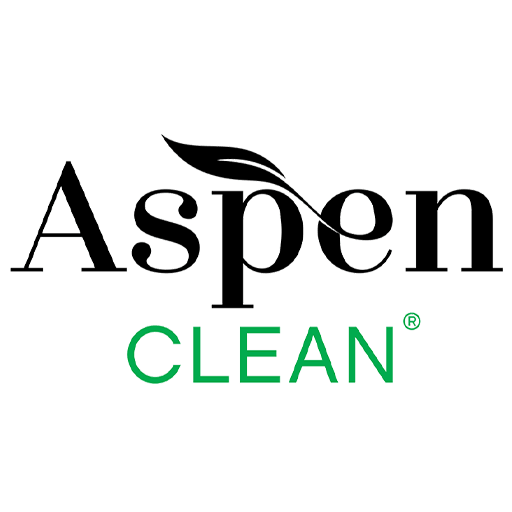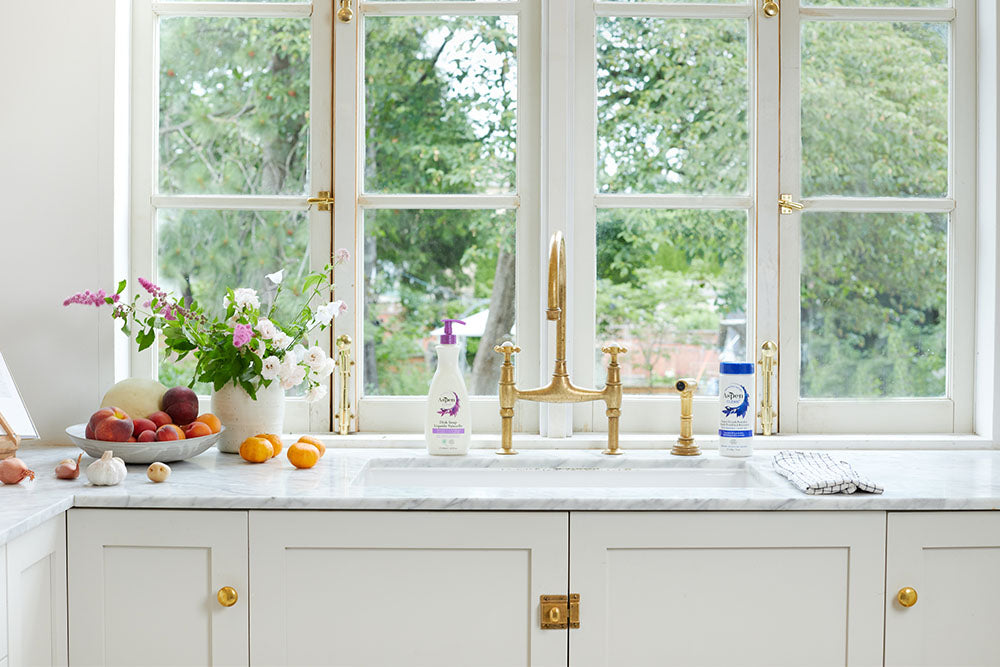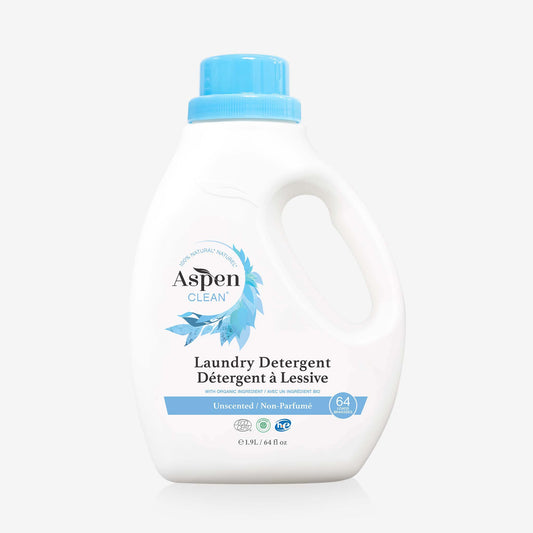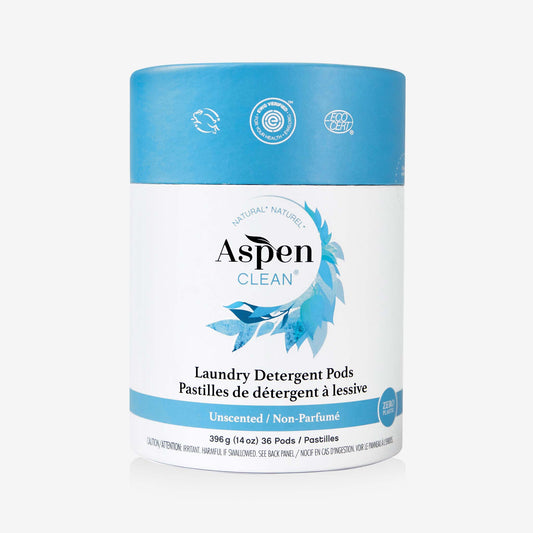Individuals unite worldwide to combat and mitigate ecosystem degradation; it is imperative that we turn our attention to the adverse effects of household cleaning products on the environment. In this blog, we aim to shed light on the knowledge we've gathered over the years regarding the environmental impact of cleaning products. That said, we will provide valuable insights into which ingredients to be cautious when choosing products that align with eco-friendly principles.
1. Water pollution
Let’s jump to the deep end. Water is one of the most essential substances on Earth. It’s key to our survival and the survival of our environment.
What causes water pollution?
Water pollution occurs when materials and/or energy are released into the water beyond its natural capacity to break it down.
Before AspenClean co-founders Alicia and Chris started looking into the effects of cleaning products on the environment, when they thought about water pollution, they thought about leaking oil tankers or companies releasing toxic waste into rivers and seas. But water pollution can come from so much more than these. It also stems from personal use of everyday items, including household cleaning products.
It seems obvious, but we just don’t think about it enough. When we use cleaners with dangerous ingredients, a large part of those will go down our drains, into the sewer system, wastewater treatment facilities, and eventually into our rivers, lakes, and oceans, causing great harm.
We’re told not to flush cleaning products down the drain...but sometimes it’s unavoidable. So what’s the solution?
Many harmful ingredients are broken down when they reach the wastewater treatment systems we have in place. These systems are designed to break down chemicals before entering the environment. However, what’s less well known is that these facilities are not equipped to filter out all the chemicals that end up down our drains.
This means many chemicals wind up in our fresh and saltwater ecosystems, where they are extremely dangerous to animals, plants and, ultimately, our drinking water and health.
Off the grid is no different.
Suppose you are living or vacationing "off the grid" and need to use a septic system. In that case, certain ingredients of traditional cleaning products can kill the bacteria in your septic tank, stop the water separation and ultimately poison the surrounding waterways with untreated wastewater, chemicals and toxins.
We found that septic systems require a lot of forethought and consideration, so be sure to read up on septic-safe products and which ingredients to avoid before going to your cabin!

Our environment is already swamped with chemicals
It’s easy to think about the 2mm shifts we can do daily to reduce the harm we’re doing to the environment each day, week, month and year. But we don’t just need to worry about future harm we could be doing to the environment. We’ve got to look at what we can do to clean up generations worth of mess.
Prepare yourself; this next section is a *little* data-heavy, but power through to get a sense of the magnitude of what we’re dealing with.
A study conducted by the United States Geological Survey in 2002 found detergent traces in 69% of streams and 66% of streams contained disinfectants across the USA.
- The Environmental Working Group's (EWG) Tap Water Database compiled 28 million water records and collected samples from nearly 50,000 water utilities serving 280 million people throughout the USA. They found more than 250 chemicals all across America’s drinking water. More than 160 of the contaminants found have no governmental limits set for them. According to scientists, dozens of the other contaminants found are at legal levels but still pose health risks.
- 40000 water systems in America have been found with contaminants linked to cancer – that is more than 80%!
2. Who is responsible for contamination?
Industry titans are responsible for much of the damage, but we can all make a difference by being more mindful of everyday choices.
What do we do when a few drops of gasoline or diesel fall to the floor when filling our cars? What do we do when painting the house and spilling a bit on the ground? What do we do when we have just a little drop of a chemical product left in a bottle? The answer is that most people don’t do anything, they leave it.

3. How should we be cleaning up our mess?
The problem with traditional cleaning products is that they contain a huge variety of chemicals.
EWG’s Guide to Healthy Cleaning researched and rated over 2,000 standard cleaning products from almost 200 brands and assessed the toxicity of more than 1,000 ingredients used. That’s 1,000 ingredients in cleaning products with toxicity levels when most household cleaning and disinfecting can be done with vinegar, water, baking soda and some essential oils for deeper cleans and a pleasant scent.
Facts like this made me determined to figure out a way we could do better by thinking outside the box. So, how do we start cleaning up our mess?
4. Do you really need that cleaning product?
As a first step, we should assess which cleaning products are really necessary.
For example, do we really need a toilet bowl cleaner, or will a bathroom cleaner, some mild scouring powder, and a bit of elbow grease do the trick? Do we really need chemicals to unclog a drain, or are household items like a long pipe cleaner or a plunger just as effective?
It’s easy to instinctively turn to chemicals because they have been part of our cleaning life for so many years. However, these chemicals could be doing more harm than good, being dangerous for our health and our environment.
An easy example we can give you is the use of antibacterial cleaning products such as wipes or lotions. It might surprise you, but in many cases, when we’re using them, we don’t actually need to. Unless we need sterile hands (e.g. for giving an insulin shot or in the case of an immune system deficiency), the excess use of antibacterial products can cause the bacteria to develop a resistance to these cleaners and can cause our immune systems to “unlearn” how to deal with the bacteria ourselves. When our bodies ‘forget’ how to combat bacteria, we end up making ourselves sicker and more frequently. Therefore, we should only use these harsher chemicals when we really need to.

5. Reduce your environmental impact
The second step is ensuring we leave as little environmental impact when we need these stronger cleaners as possible.
In order to know if a cleaning product or a dishwasher detergent is dangerous to us or our environment, we need to get into the habit of checking the product labels. Before they began AspenClean, Chris, and Alicia looked out for the following things on all product labels. Now, we make sure all AspenClean products consider these factors for our customers.
- We avoided products marked “Danger” or “Poison” altogether and tried to reduce our use of products labelled “Caution” or “Warning” since exposure to these products can still lead to skin and eye irritation.
- We also checked the list of ingredients. Unfortunately, we discovered that there are no current laws in Canada or the U.S. for companies to publish all the ingredients they use on the labels of cleaning products. Therefore, to make sure we were informed before our purchases, we would go to EWG’s Guide to Healthy Cleaning and look for green cleaners without harmful ingredients. We also decided that for our own products, we wanted to clearly label every ingredient we use to help our customers make informed choices.
- It’s important to ensure any cleaner's ingredients are easily biodegradable and break down quickly in wastewater treatment facilities. For this, we recommend looking for 100% natural or all-natural products certified by an independent institution, such as EcoCert.
- If you’ve not come across EcoCert before, it is an internationally recognized certification that guarantees environmental respect throughout the design and creation of a product. EcoCert is our first reference point because it has very strict requirements for products, more stringent than other “green” labels found in North America, like Ecologo and GreenSeal, which allow many ingredients that are suspected toxins, carcinogens or hormone disruptors.
- Finally, try to stick to the usage directions on product labels. Using more product than strictly necessary can be tempting because it feels like more product will clean better. But this is not the case. So stick to the amount suggested and reduce the amount of cleaning products ending up in our wastewater. If you’d like some quantity amount help for doing your laundry, take a look at our blog on how much laundry detergent to use in HE washers for guidance.
6. Which cleaning products are harmful to the environment?
A few customers have asked us what specific ingredients to look out for and avoid when buying their cleaning products. This is a list Chris and Alicia have had for a while, and it’s what we use as a base for things NOT to include in AspenClean products. It’s a great start for anyone looking to be more aware of what they are purchasing.
Cleaning Products that harm the environment:
- Triclosan
- 1,4-Dioxane
- Nonylphenol ethoxylates (NPEs)
- Phosphates
- Phthalates
- Quaternary Ammonium Compounds (QUATs or QACs)
- Volatile Organic Compounds (VOCs)
- Methylisothiazolinone (MI)
TRICLOSAN
- Found in most cleaning products labelled as “antibacterial”
- Kills bacteria, fungi, and mildew, but also algae, which are a very important cornerstone in aquatic ecosystems and in the food chain
- Triclosan traces have been found in 58% of 85 streams throughout the U.S. and even in multiple organisms such as algae, black worms, fish, and even dolphins, with unknown consequences on the animals’ health.
- Lab studies link Triclosan to cancer, developmental defects, hormone disruptions, and liver toxicity
- In the cleaning industry, 1,4-Dioxane manufactures surfactants such as ethoxylated alcohol and sodium Laureth sulfate (SLES). It can be released into the environment as a byproduct of this process.
- Though it does not bioaccumulate in the food chain, it does not readily biodegrade in water or soil, so it can persist in the environment.
- In most cleaning products labelled as “antibacterial,” The US Environmental Protection Agency (EPA) fact sheet on 1,4-Dioxane notes that it readily leaches through the soil and into the groundwater.
- The Environmental Working Group's (EWG) 'Guide to Healthy Cleaning' reports 1,4-Dioxane as a confirmed animal carcinogen. However, the effect of 1,4-Dioxane on animal health is overshadowed by threats to human health. According to Environment Canada, 1,4-Dioxane meets the criteria for persistence in the environment. The levels of 1,4-Dioxane detected in the environment in Canada are not considered to be an immediate risk to human health. However, unmitigated use could change this.
NONYLPHENOL ETHOXYLATES (NPES)
- Found as a surfactant in cleaning products
- Used to loosen the dirt and grease from surfaces
- Have been detected in water, sediment, mussel, fish, and even cormorant egg samples.
- They are highly toxic to aquatic life, causing heavy damage to fishes’ gills and destroying the mucus layer on their skins, which protects them from bacteria, parasites, and toxins in the surrounding water
- In the environment and through bacteria in the wastewater treatment facilities, NPE degrades to Nonylphenol (NP), which is known to mimic the hormone estrogen64 and impact the production of testosterone, having reproductive and developmental effects on rodents
PHOSPHATES
- Found as a detergent in floor cleaners and other household cleaning products
- Wastewater treatment facilities can only filter out about 30% of phosphates from wastewater, so the majority of the chemical enters our waterways
- In a recent study, goldfish exposed to phosphates in water exhibited an unusually inactive state with increased breathing as well as secretion of mucus. In higher levels of phosphates, the fish died, suggesting that they are highly toxic and lethal to fish.
PHTHALATES
- Most common in air fresheners, but also in cleaning and laundry products of all kinds.
- Usually not disclosed in the list of ingredients because they are part of fragrances which are protected by trade secret law. Most fragrances contain phthalates.
- Phthalates have been detected in air, drinking water, rivers, and soil and can even be found in rainwater due to their ability to migrate or leach from manufactured goods.
- Some phthalates have been shown to cause severe reproductive and developmental disruption
- Others are toxic to aquatic organisms such as bacteria, algae, crustaceans, insects, and even fish.
- Phthalates can cause infertility and reproductive problems in female fish as well as feminization of male fish, frogs, and other animals
QUATERNARY AMMONIUM COMPOUNDS CLEANING PRODUCTS (QUATS OR QACS)
- Used as disinfectants, surfactants, and fabric softeners in cleaning and laundry products.
- Toxic to a lot of aquatic organisms such as fish, daphnids, algae, rotifer, and microorganisms. This also includes the bacteria in wastewater treatment facilities so that QUATs can impair their efficacy and degrade the quality of our drinking water.
- Also, QUATs don’t easily degrade in the environment, so they will build up and cause long-lasting harm to ecosystems.
VOLATILE ORGANIC COMPOUNDS CLEANING PRODUCTS (VOCS) SUCH AS PHOSPHORUS, NITROGEN, AND AMMONIA COMPOUNDS
- Found in many cleaning products of all kinds
- In waterways, VOCs cause excess growth of algae, which results in the spread of bacteria, loss of daylight vital to aquatic ecosystems, as well as a depletion of oxygen levels, killing fish and other animals
- VOCs can even lead to algal bloom, which can poison drinking waters or lakes for swimming, for example, in the case of blue-green algae.
- The water turns green, slimy, smells terrible, can’t sustain aquatic life, and is not safe for drinking anymore
METHYLISOTHIAZOLINONE (MI) DANGERS
- Found in many cleaning products, including 'healthier' or 'greener' alternatives
- The Environmental Protection Agency (EPA) states that Methylisothiazolinone is highly toxic to freshwater and marine organisms
- Only one of the two compounds that make up Methylisothiazolinone is susceptible to degradation in water - and only in specific conditions.
- Methylisothiazolinone has the potential to persist in our natural environment, the effect of which is yet to be assessed.

7. No one can save the world on their own!
If one single person changes their use of cleaning products, using fewer products, fewer chemicals, and making sure to use only all-natural, eco-friendly laundry detergents, and dish soaps, the impact will be minimal.
BUT there will be fewer chemicals and less harm to the environment than there would otherwise have been. Imagine the impact if more people do the same. If we change how we use cleaning products as a society, we can have a substantial positive impact on our environment.
In the words of Helen Keller, a former American political activist and author:
"Alone, we can do so little; together, we can do so much."
Many AspenClean customers are already aware of the direct dangers regular cleaning products can pose to human and pet health in our homes, which is why they choose all-natural cleaning products without toxins, chemicals, or fragrances.





